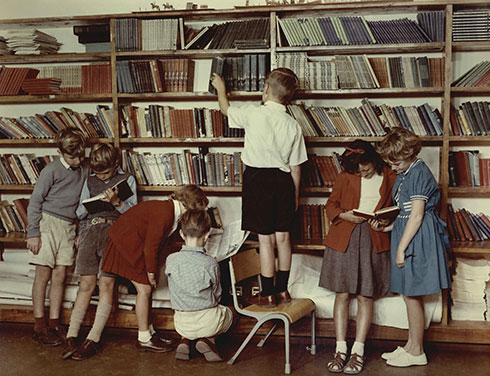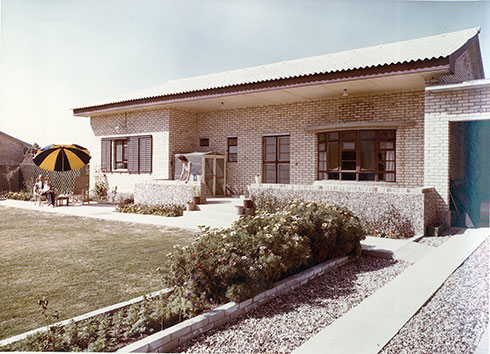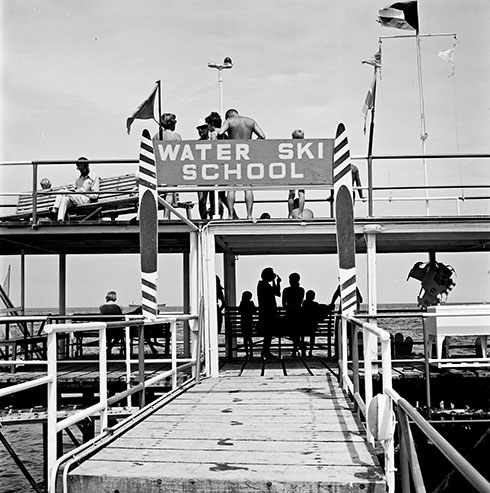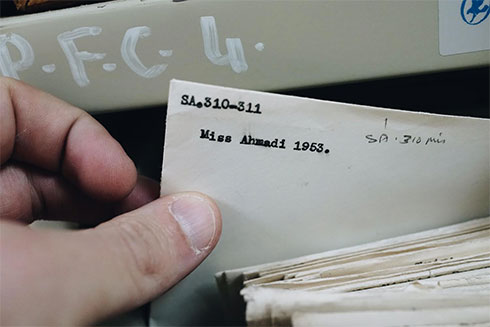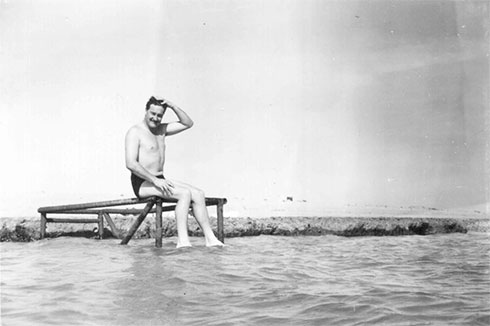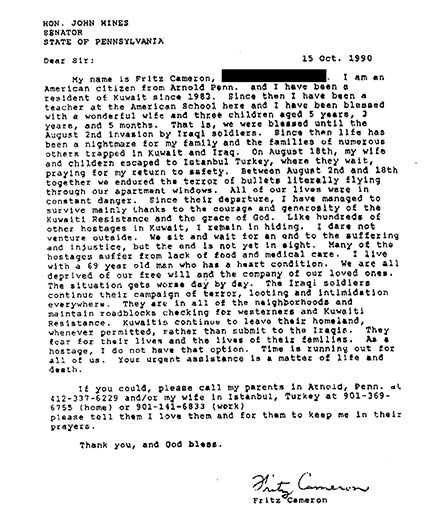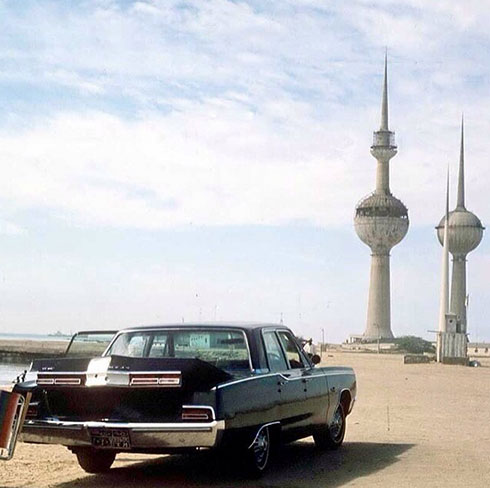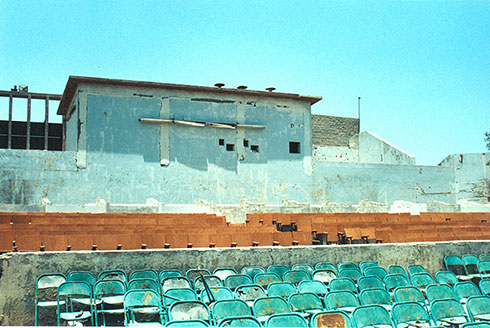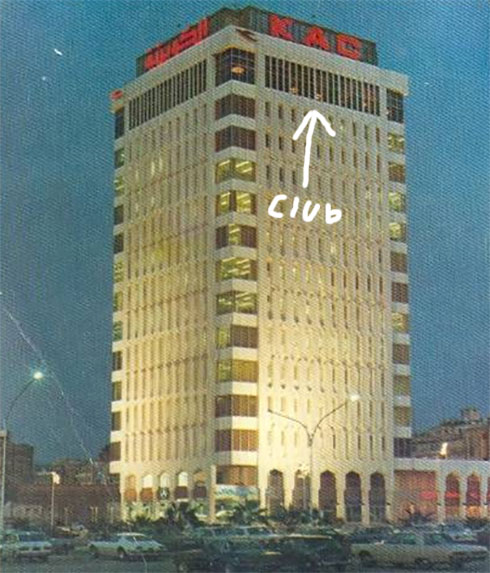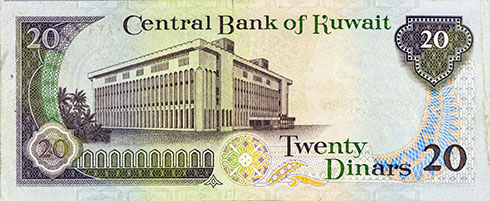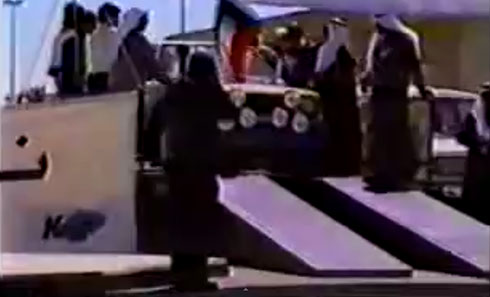Back in May while doing some research about Kuwait in the old days I contacted a person by the name of John Beresford and asked him if he had any old photographs or videos of Kuwait from back in the old days. Turns out he didn’t have any videos but he did have some photos and more importantly, a treasure of information, mostly stories of simple things from life back then that many people might have forgotten or not even have known about. I’ve been trying to figure out how to share this trove of fascinating info for the past week and just decided I would share it in parts.
This is
Life in Kuwait back in the 1950s – Part 1
by John Beresford
————————-
Ahmadi was built from scratch, power, drains, everything. My father arrived in April 1949 – he missed the last flying boat service by a week which always disappointed him – he fancied the flight from Beirut via the Iraqi Marshes to Shuwaik. One of the people he arrived with got up, walked to the door, looked out and went back to sit down – he did not get off the plane. Dad did and spent 2 weeks in a tent before graduating to a nissen hut, which was far too hot – with limited power there was no overhead fan. He shared with some fairly coarse drillers from Oklahoma who kept a pistol which was passed around in turn to everyone. It was the job of the person with the pistol to go outside at night and shoot any braying donkeys that were keeping people awake. The only thing he kept from the experience was a taste for iced tea and a distaste for drillers.
My parents got married in 1954. Kuwait Oil Company (KOC) gave them a married quarter and equipped it. Furniture, linen, plates, cutlery, aluminium saucepans, were supplied. I still use the cutlery – EPNS from Mappin and Webb, and some for the saucepans and chip pans. They are stamped with ‘KUOCO’. The crockery had a green band around the edge – I don’t remember who made it. You supplied your own curtains, carpets and bedding. There was nowhere to buy such things so KOC had a commissariat and issued such items. Later on, in the 1960’s, it decided to stop doing this and let everyone keep what they had already received. There was a laundry in the industrial area, North of the South tank farm, where items could be laundered, dry cleaned and starched if necessary. I threw away an old KOC laundry box this summer- it had been used to store tools in the garage. The system was pretty much the same as the army used, and most people employees had been in the forces. They had been posted overseas and had little desire to return to the UK as it was cold, depressed and depressing. Quite a few had been in the British Palestine Police and after 1948 moved elsewhere. There was quite a mix of people around; Dad liked playing rugby in Basrah because there were lots of nightclubs and shows populated by white Russian dancers who could not go back home.

In the picture of the front room note:
– The gas fire – every KOC European/US house had a gas fire , and we used it!
– There is an electrical fan on the floor. I don’t know if this means there was no air-conditioning yet. Overhead fans did exist. The air-conditioning was not as nowadays, with individual units to each room. KOC had a central Ice Plant, that produced ice (obvious from the name) and a lot of cold water. This was piped around the European part of Ahmadi (the management/supervisory accommodation) because managers and supervisors tended to be European, and had higher spec accommodation. The Indians and Pakistanis (IPs) had their area and type of houses, and the Arabs had theirs. Arab managers had management houses. The original drains were made of cast iron and the manager in charge of the domestic infrastructure got bored and did a survey to see haw the drains stood up to use. His conclusion was that the drains in the IP areas corroded more quickly that in the Arab areas, and the Europeans’ drains corroded least of all. He attributed this to the diet.
However, reverting to the a/c, the insulated pipes carried the chilled water to the main a/c unit in every house, and from there cooled air was pumped around the houses. It was an efficient way of supplying a/c. The houses had large ducts made of asbestos sheet that cooled most rooms. I don’t know of anyone that has blamed any subsequent cancer on having had their a/c ducts made of it. Of course when my father had been doing some plumbing and had failed to complete it before the ice plant started to pump its cool water around town he had to phone up and tell them to stop the pump until he was all watertight again! As he was by this time in charge of Ahmadi’s services as well as the oil company’s electrics he could get away with a lot.
– The standard lamp is the one issued by KOC. The entire front room looks shockingly similar to the 1950s room in the Geffrye Museum – a small museum in London, North of Liverpool Street Station, that displays the British domestic front room throughout the centuries. So many people had rooms like the one in the museum. Especially the textiles.

The photo above shows the house after my parents had moved in. There is no garden. It was easier to get the fence and other bits from KOC and build your own. Dad bought concrete flagstones and brought them home 2-3 at a time. In the distance another house is being built. This is up in the Ridge area of Ahmadi. Our house backed onto desert (from the photo at this time it seems to have fronted onto desert as well) and at the back were well heads from the Ahmadi field. In 1956 someone took exception to the Suez Crisis and blew one of them up. This really annoyed my mother. I had 24 terry nappies that were reusable and most of them had been boiled and were hanging on the line when the explosion happed. The fire that resulted covered them all in oily soot and Mum never managed to get them white again. The clean up afterwards she never forgot. Things had to be cleaned. If she had thrown them away there were no more to be obtained. This ridge area was covered in houses when we left in 1972. Houses were every 30-40 yards or less. As it started to drop down the long incline to the sea the slope arrived at the Hubara Club, and the golf course, neither of which had been built when this photo was taken.
Some houses were called PMQs others were called Swedes because they were wooden houses, prefabricated and shipped in from Sweden. Ours was made of Basrah brick which is quite soft. Generally the Americans had bigger houses and earned more money because they were Americans. It was said that everything cost more in the USA. If it did then, it certainly does not nowadays. Everyone had their grade of housing – very much like the armed forces. Bachelors had their accommodation in the guest house where we sometime went on fridays to have a curry. Only rarely, but we enjoyed it greatly. Again, the ‘Bachelors’ Mess’ was modelled on the armed forces.
One way or another you could get most things from KOC. After prohibition came in he and one of his staff, who had worked in a distillery, had the fitters in the electrical division make a still, a proper one, with thermostats, electrical heating, a cooled column for fractionalisation with about 800 marbles in it to increase the surface area for condensation, and the distillate was filtered through charcoal. They then distilled it a 2nd time for purity and then converted it into whatever tipple they wanted, usually gin and brandy. A mail order shop in New York sold food colouring and ingredients especially designed for home-made hooch. The cook made the caramel for the brandy (Dad liked the treacly taste of the Cypriot Keo brandy) and to add flavour he threw a handful of white oak chips into each bottle to simulate aging in a cask. Once his shipment got stopped by Kuwaiti customs and he had to explain what it was for to get release; he said that the white oak chips were for smoking fish, and took along an article explain how kippers were made to help. After much scepticism the shipment was released.
I mentioned a cook. KOC gave managerial staff an allowance to be spent on a servant. The choice was an ayah or a cook. We had a cook. He was a fantastic cook. He was a Pakistani and before partition had been a demonstration chef at the Indian Army School of Cookery. He could cook anything well and knew all western culinary techniques, and if he had forgotten he said so, and asked for a Larousse or some such to refresh his memory. He must have been quite old as he remembered being caught in the great Quetta earthquake and that was in the 1920s.
————————-
End of Part 1
